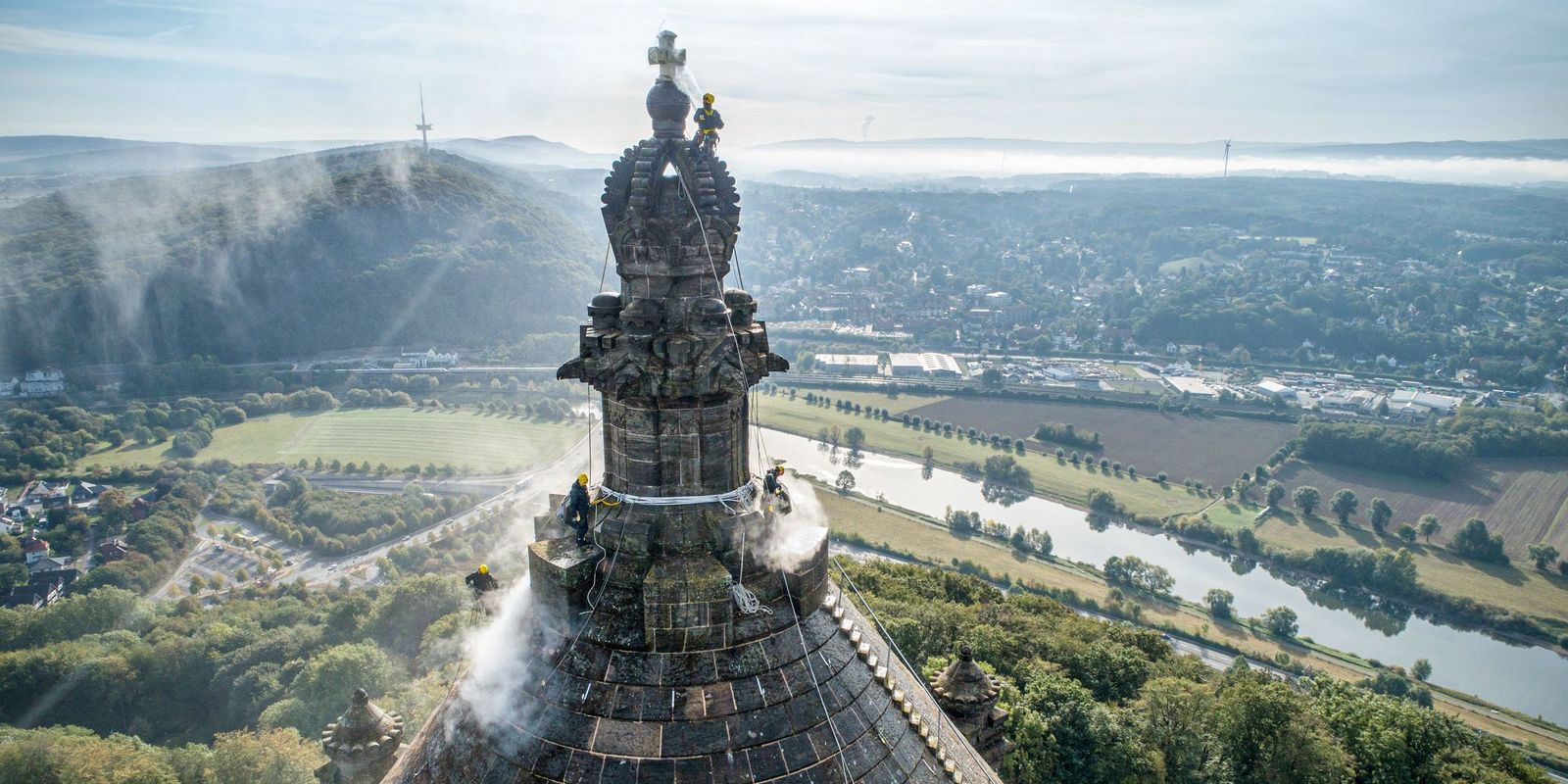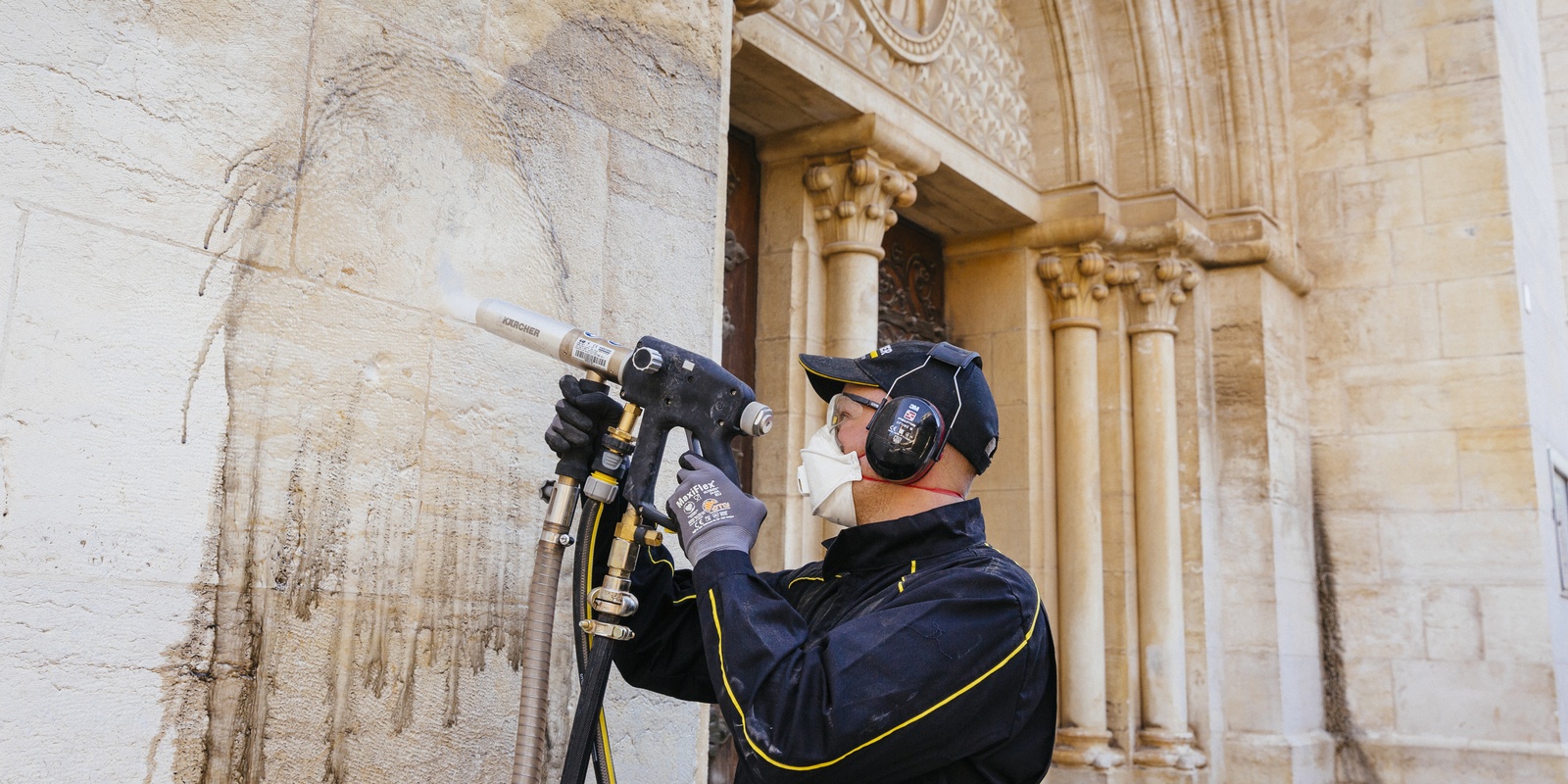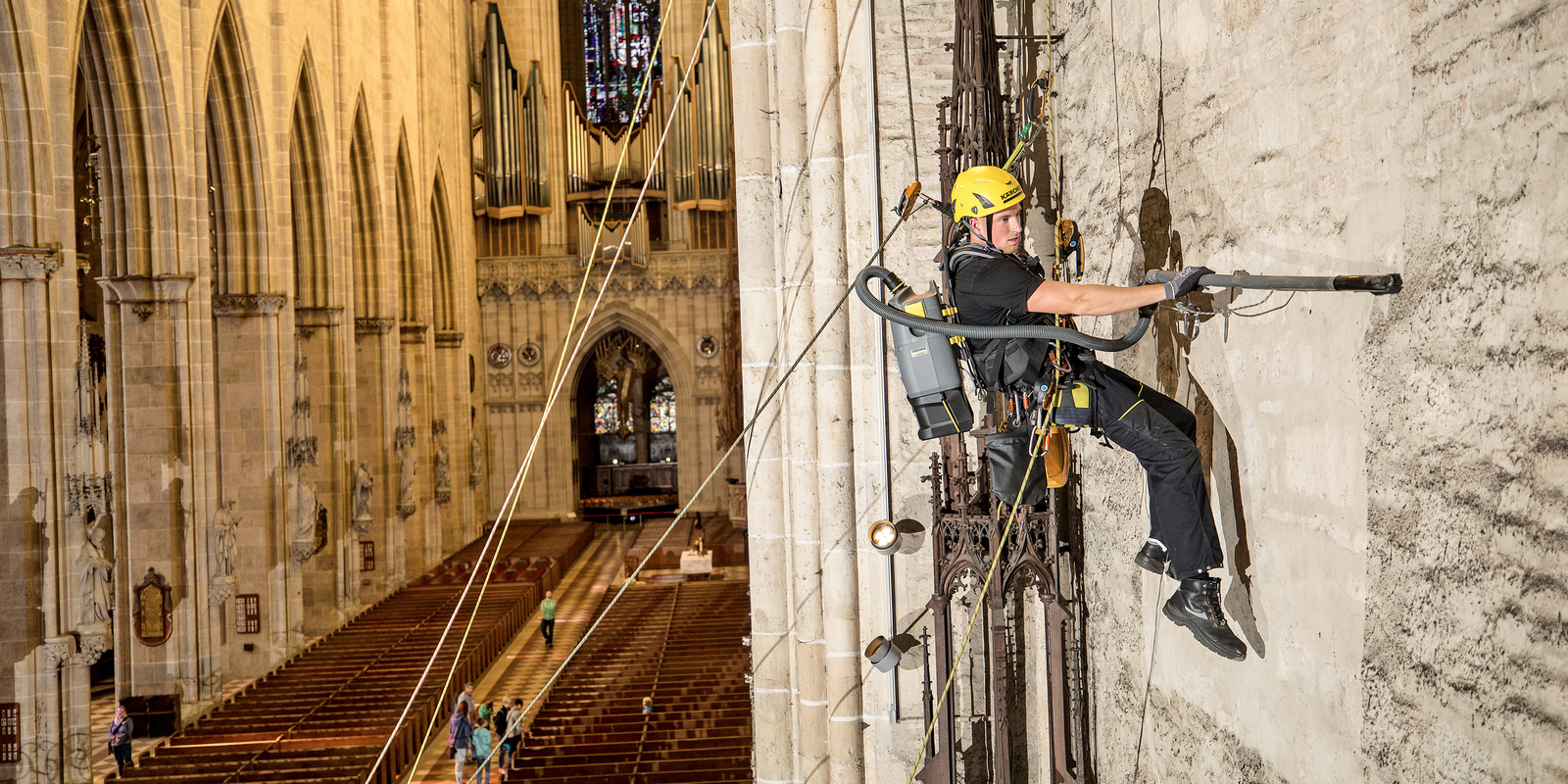Outer Wall of Cologne Cathedral Gently Freed From Deposits
Over the centuries, impurities have accumulated on the stone walls of Cologne Cathedral, which is why parts of the church facade were professionally cleaned.
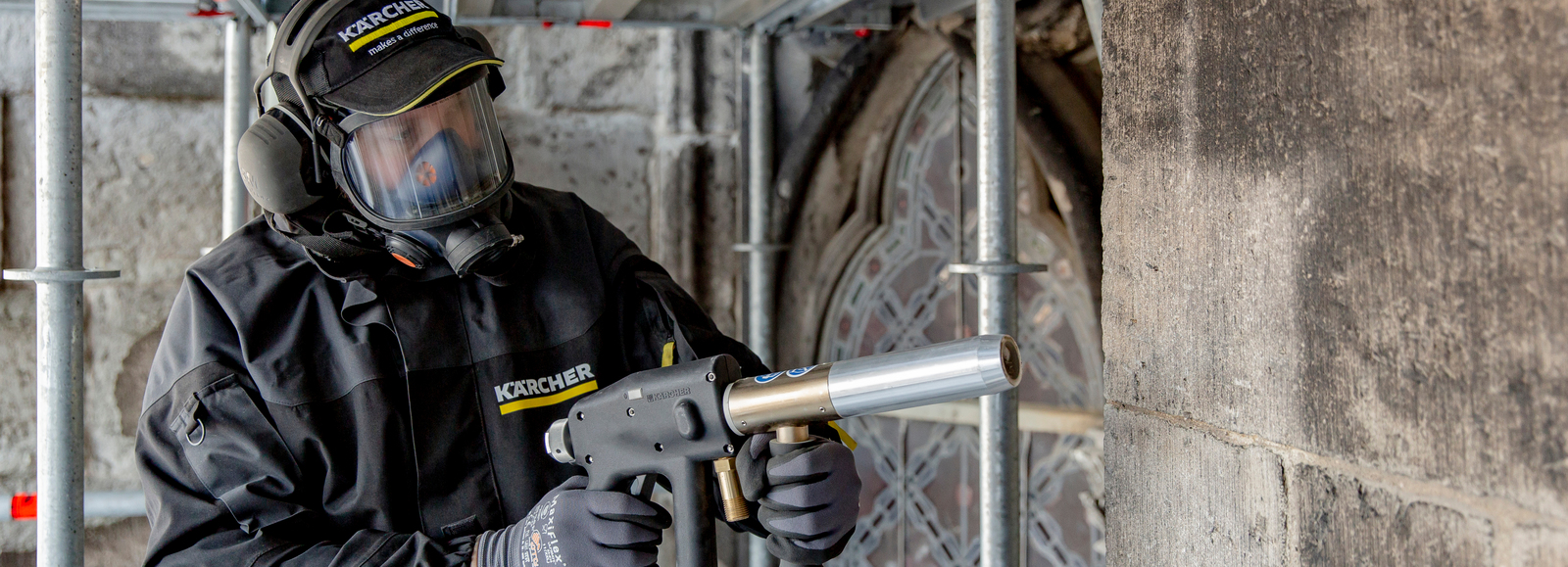

Over the centuries, coal heating systems, factory chimneys and steam locomotives led to the black discoloration of the outer stone walls.
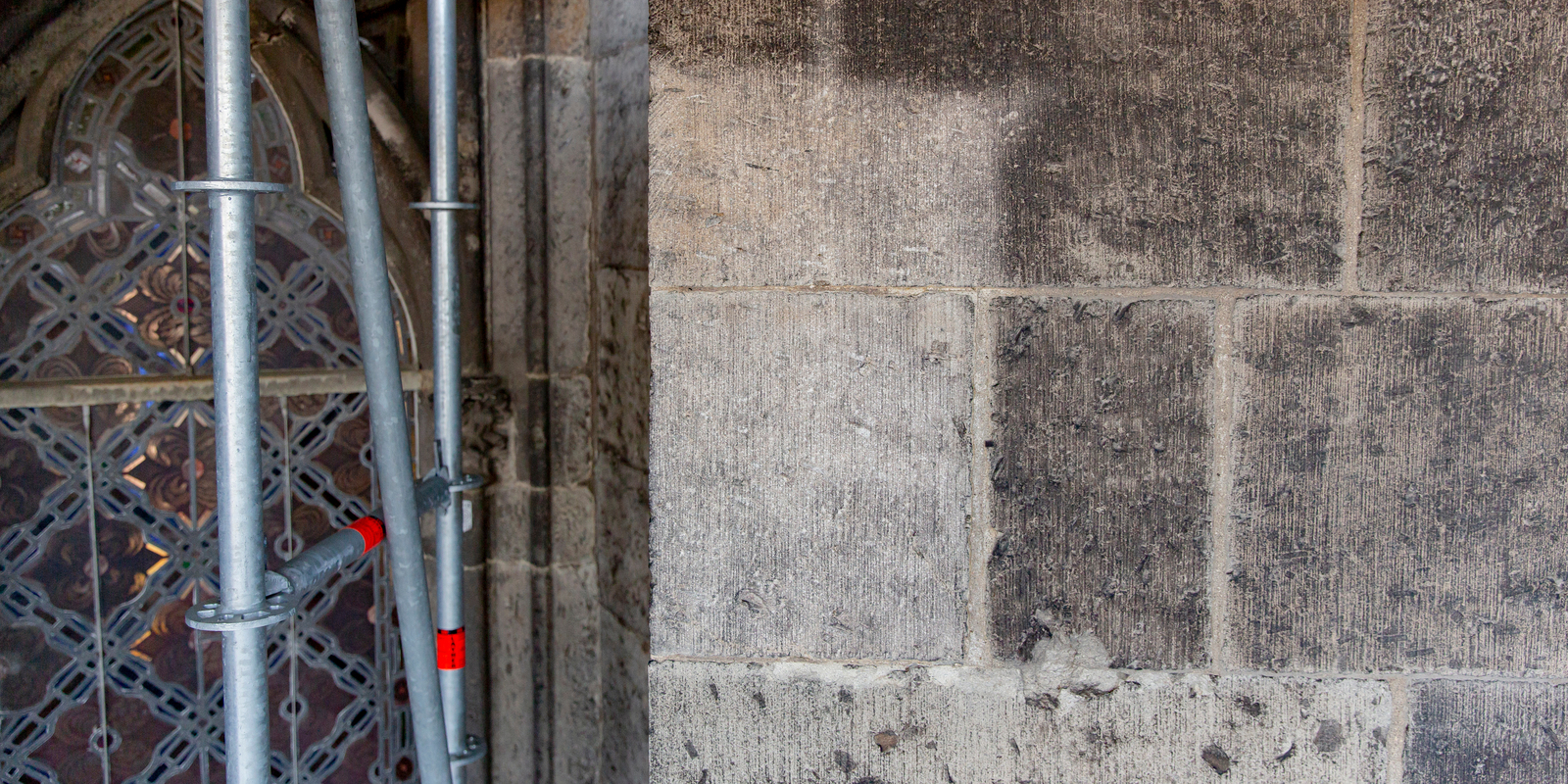
The outer walls of the medieval choir chapel wreath and areas of the southern transept were cleaned of black crust deposits using the low-pressure, microparticle blasting technique.
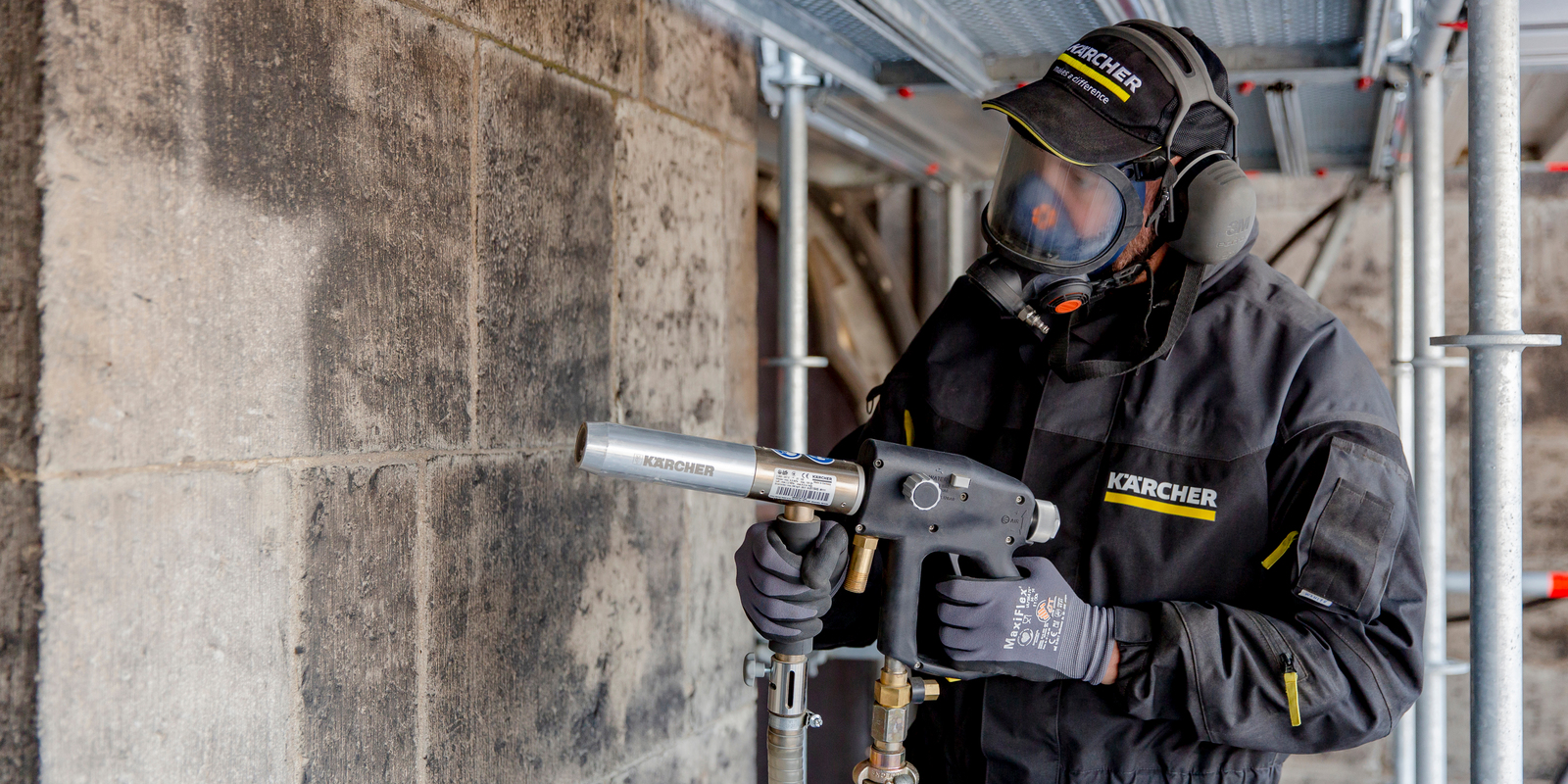
A fine aluminium silicate (40-90 μm) was used as the blasting abrasive, which dissolves the deposits without damaging the valuable original substance of the cathedral facade.
Cleaning the Outer Wall of the Cathedral
It is over 770 years old, one of the most visited buildings in Germany, and was once the highest building in the world: Cologne Cathedral. Over the centuries, however, impurities have accumulated on the stone walls, which is why parts of the church facade were professionally cleaned. As part of its cultural sponsorship, Kärcher was making several machines available to the Cologne Cathedral Workshop.
After Kärcher's cleaning experts have created test surfaces to ensure the best possible result, gentle cleaning was the next step. The outer walls of the medieval choir chapel wreath and areas of the southern transept were cleaned of black crust deposits using the low-pressure microparticle blasting technique. For this purpose, Kärcher was providing the cathedral workshop with several low-pressure blasting guns free of charge, with which the sensitive rock was carefully cleaned.
Traces of Over 770 Years
A fine aluminium silicate (40-90 μm) was used as the blasting abrasive, which dissolves the deposits with a pressure of about 2 bar without damaging the valuable original substance of the cathedral facade. Thorsten Möwes, Kärcher specialist for restorative cleaning, trained the restorers and stonemasons of Cologne Cathedral in the professional use of the provided technology.
The facade of the high Gothic cathedral, whose foundation stone was laid in 1248, is heavily polluted by external influences. Over the centuries, coal heating systems, factory chimneys and steam locomotives led to the black discoloration of the outer stone walls. In addition, the facade is covered by microorganisms such as bacteria, algae, and moss, which make the stone appear very dark.

Facts at a glance
Country: Germany
City: Cologne
Soiling: Black crusts, bacteria, algae and moss
Cleaning technique: Low-pressure microparticle blasting method with fine aluminium silicate (40-90 μm) as blasting abrasive
Execution: October 2019

